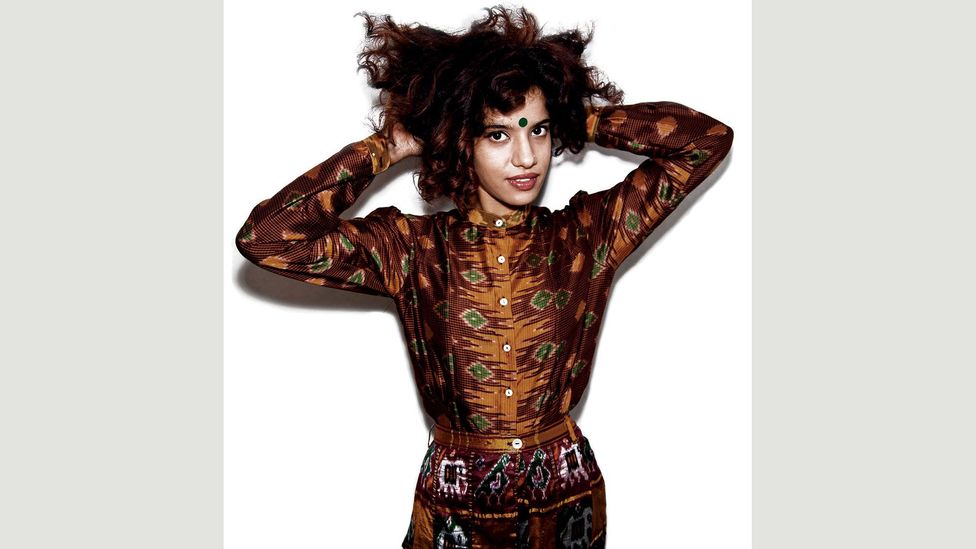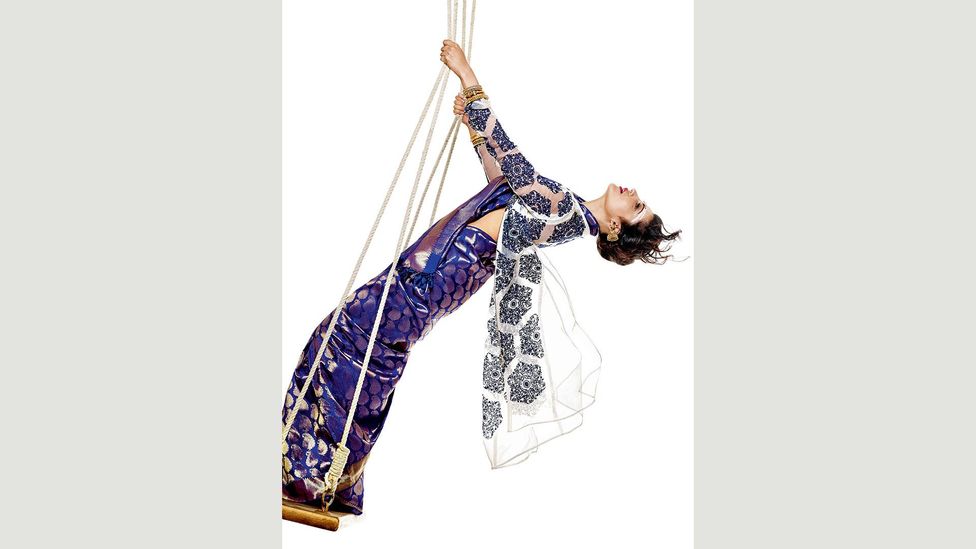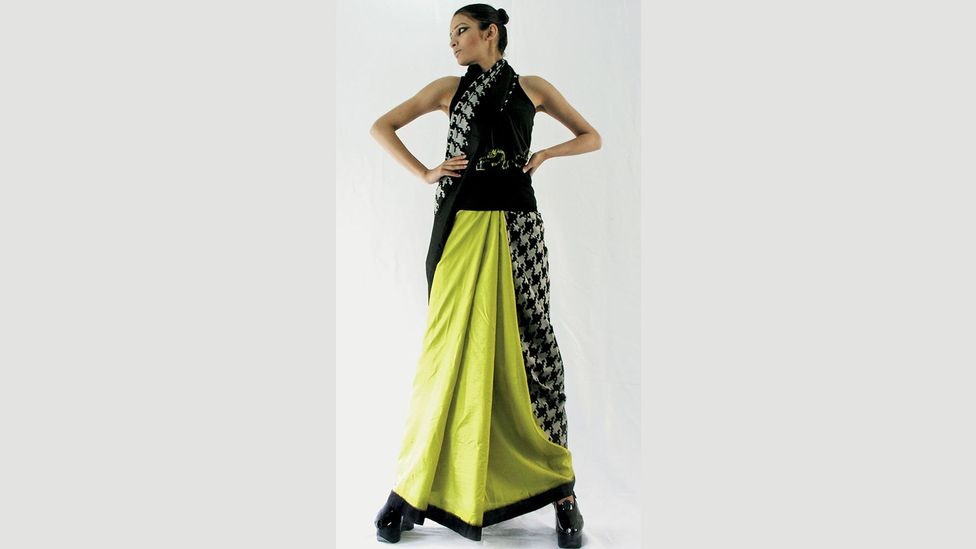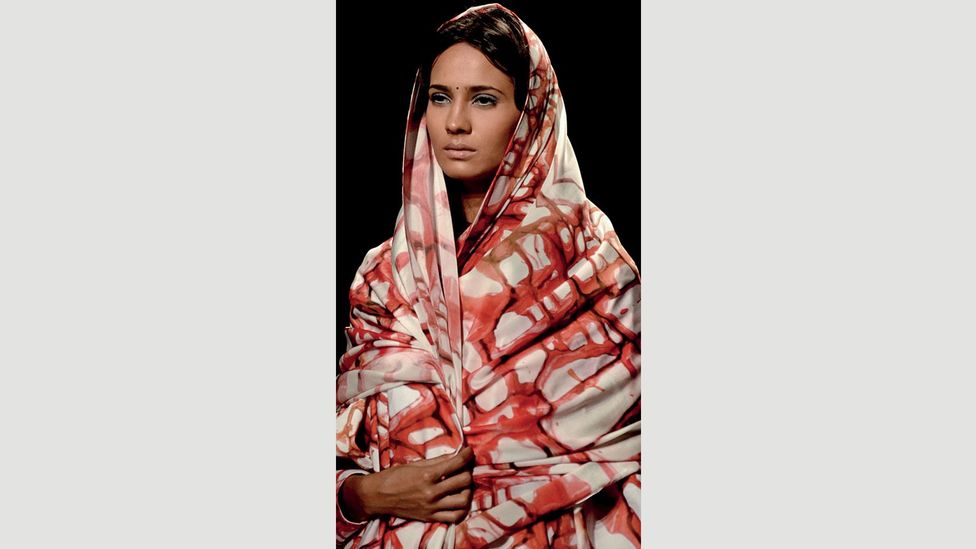Fashion in India Today Fashion in India Today
What is Indian style today?
(Image credit:
Fashion India/Thames and Hudson
)

Textiles and design take long played a part in defining India'southward culture and national identity. But what does that mean in a rapidly modernising surroundings? Phyllida Jay reports.
C
Contemporary Indian designers create an extraordinary spectrum of way, from ornate conjugal ensembles to minimalist daywear. Today, they are faced with the challenges also every bit the opportunities of carving out a space in a market that also produces a large corporeality for international brands – many of which, such as Zara and H&M, are planning expansion beyond the country.
Amid Bharat'south rapid globalisation and economic development, manner provides a lens onto culture and the transforming fabric of guild, according to Parmesh Shahani, director of Mumbai'due south Godrej India Culture Lab. "Fashion'south enormous artful diversity is a reflection of the polyphonous nature of our lodge, which now, as e'er, is in the midst of an heady churn," he says. "It also has roots, which is why we run across tradition holding its basis: whether in women wearing, and re-imagining saris, or men wearing the mundu, and in a lot of bridal fashion.
In a society defined by sharp contrasts between ancient tradition and uber modernity, Indian style is displayed in a mixing of ethnic and Western fashions. Kurtas are worn with jeans or redefined as linear, minimal dresses, lehengas are given peplums and boot flares, and saris are reinvented as 'sari-gowns' or styled with sharp blazers and archetype white shirts. Countless permutations of garments, colour and excess or absence of decoration allow individuals to explore their Indian identity. In this mode Indian fashion produces tradition every bit much as modernity, ane of the unique characteristics of the national style.

The CellDGSN 11.xi drove is made from reclaimed and upwards-cycled saris (Credit: Fashion India/Thames and Hudson)
Here comes the bride
At the forefront of the traditional market place are the conjugal designers, catering every bit they are to weddings and key celebrations that cement social and cultural bonds. According to The Business of Manner's Imran Amed, Condé Nast estimates the worth of the Indian bridal market at $38 billion per year. Anthropologist Professor Christiane Brosius attributes the conjugal manufacture's exponential growth to post-1994 liberalisation, which created a burgeoning middle course and a new mood of pride in being Indian, expressed though luxury and conspicuous consumption.
JJ Valaya, one of the most successful Indian designers today, uses opulent embroidery in occasion-habiliment influenced by the grandeur of royal Indian history. He says of his design ethos: "As an Indian designer, I take always felt that our prime number responsibility should be to go on the Republic of india that was alive inside the India that is (or the i that will exist)… No piece of cake chore, given the present fetish for minimalism and yet, I've always believed that Indians at heart are maximalists and so, will always remain connected with elegant backlog."

Actress Shruti wears an ivory organza hand-embroidered jacket by Rahul Mishra, whose designs express themes of sustainability (Credit: Manner India/Thames and Hudson)
Whilst conjugal article of clothing dominates the concern of Indian style, new generations of designers are producing innovative designs. Many grapple with the question of maximalism versus minimalism as an essential role of Indian culture. Some are reinventing traditional embroidery and appliqué skills in garments free from Bollywood bling, withal retaining the quintessentially Indian loftier embellishment aesthetic, using traditional craft skills.
Textile of society
Rahul Mishra won the prestigious International Woolmark prize in 2014, and has showed at Paris fashion week for the past iii seasons. His sophisticated designs express themes of sustainability and livelihoods through intricate tessellated embroideries past artisans in rural Bengal. Of his most recent Paris collection Mishra says: "The idea was to focus on the age old artistry and techniques and to create a completely modern look, a look with a touch of surprise and newness."

Abraham Thakore are function of a group of designers who utilize traditional craft techniques as an alternative to 'bling' (Credit: Style Bharat/Thames and Hudson)
Mishra is an alumnus of The National Found of Design, renowned for a curriculum that places Gandhian ideals of social good at the heart of design. Although fashion is often perceived every bit a frivolous indulgence, particularly in a country where poverty levels are notwithstanding loftier, many designers meet themselves as part of the solution through design-led material evolution.
Textiles have long played a part in defining cultural and national identity. Mahatma Gandhi believed mitt spinning and weaving of khadi was essential to Republic of india's economic development and freedom from colonial domination, developing this belief into the political motility of Swadeshi. A notable group of designers work inside the legacy of Gandhian philosophy, placing emphasis on Indian textiles and craft traditions.

Designers such as Kallol Datta and Arjun Saluja recreate the sari with Japanese pattern concepts or tailor it in Western traditions (Credit: Mode Bharat/Thames and Hudson)
Abraham and Thakore are at the forefront of this 'New Swadeshi Movement'. Like many designers working with handloom, their artistic vision forms an alternative to Bollywood bling. Their AW/13 collection Shaadi Redux (Wedding Revived) used the rich sheen of handwoven Benares silk to create archetype Indian shapes like kurtas and Nehru jackets with traditional motifs replaced by graphic patterns. David Abraham explains: "We wanted to run across how we could employ the circuitous hand jacquard techniques of Benares aboriginal weaving traditions to create a modern linear design language that stayed away from the Orientalist clichés of paisleys, peacocks and lotuses."
"People are re-imagining their Indianness to include our textile heritage" says Parmesh Shanahi. "Moreover whether you're wearing a handwoven kurta with jeans, or a high cease couture slice – both are considered cool. Our crafts are lived crafts, and as we brainstorm to re-appreciate this and include them in our daily lives, it will exist good for all – for the craftspeople who tin take improve livelihoods, and as well for the states, nosotros will be able to mode our future aesthetics from a identify of rootedness."
As part of its India flavor, London's V&A museum is showcasing Indian textiles in The Fabric of India exhibition. Information technology includes contemporary examples of how traditional textiles are defining the aesthetics of high fashion. In turn, as a repository of exemplary antique Indian textiles, the V&A athenaeum inspire contemporary designers. Rajesh Pratap Singh, known for his well-cut day wear fabricated from khadi, handloom and indigo-dyed denim points to a fine khadi shirt in his studio. "On my visit to the V&A material archives from the 18th and 19th Century I saw a khadi muslin, flawless and beautiful in its execution," he says. "This gave me the impetus to further innovate on the in-house khadi developments we have been undertaking at our weaving unit in Rajasthan."
A design language of the 'now' requires responsiveness to broader social issues. Some designers are commenting on environmental pollution by turning to Jugaad, a traditional approach to repair and reuse of materials, adjustment it with global concepts of up-cycling. Amit Aggarwal'southward avant garde, sculptural, intricately constructed wear, incorporates recycled materials elevating them to conceptual high fashion. For AIFW SS/16 waste polythene numberless were interwoven with 'gamcha', coarse, handwoven towels commonly used across India. "I've enjoyed working with materials that are a byproduct of industrialisation and mixing these with traditional crafts," Aggarwal explains. "I am fusing contrasting identities to create a special language of clothing."
This is evident in the reinvention of the sari, that virtually traditional of Indian garments. Designers like Kallol Datta and Arjun Saluja recreate the sari with Japanese pattern concepts of deconstruction, or tailor it in Western traditions of cut and construction. "They express their Indianness in not-obvious ways," Parmesh Shahani says. "Kallol frequently references his very strong Bengal connectedness, it might announced in the bright red of a sari border for example."
Informed past a rich craft heritage and a culturally various population, Indian fashion today is more than a sum of its parts. Its designers blend a vast assortment of influences, in the process forging a design language as surprising and intriguing equally India itself.
Phyllida Jay is the writer of Fashion Bharat, published by Thames & Hudson.
If you lot would like to comment on this story or anything else you have seen on BBC Civilisation, head over to ourFacebookfolio or message u.s.a. onTwitter.
0 Response to "Fashion in India Today Fashion in India Today"
Post a Comment